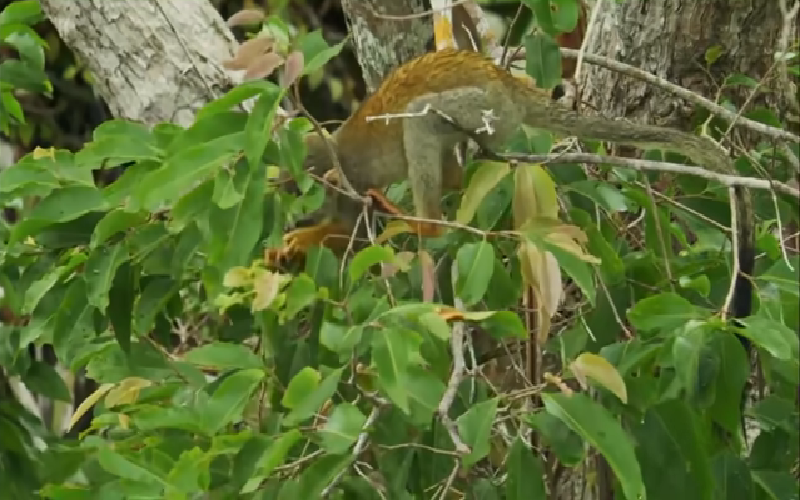
7 ways to create new plants
June 25, 2022
In what ways are plants propagated?
Propagation is part of the biological cycle of plants. A characteristic stage of this process is the creation of seeds that fall to the ground for a new plant to grow.
In addition to seeds, plants have other mechanisms that allow them to reproduce naturally. Strawberry shoots for example have the ability to create roots when they touch the ground which then develop into new plants.
Some ornamental plants, such as dahlias and tulips, grow bulbs in the soil, which are preserved to grow new plants the following year.
Other plants have the ability to create new plants around their root, such as aloe and artichoke.
It is important to know in what ways each plant is propagated so that we can create our own plants easily and efficiently.
This process is quite useful when we want to preserve some local varieties or when we want to create a large number of plants at low cost.
So let’s see how plants are propagated so that we can successfully make our own plants to fill our pots, plant in the garden and share with loved ones.
Advertising
1. Plant propagation by seed
The most widespread way in nature to make new plants is by seed. We plant seeds to make vegetables such as tomato, cucumber, squash and corn, as well as ornamental plants such as petunias, pansies and to plant lawns.
The process of creating a plant from a seed, although it requires a little more time, gives us the pleasure of watching all the stages of the plant’s development from a seedling to a large plant.
How plants are propagated by seeds
2. Propagation of plants by bulbs
Some ornamental plants are propagated by bulbs that grow underground. This category of plants includes some of the most spectacular flowers with wonderful colors and beautiful blooms, such as the tulip, dahlia, gladiola and freesia.
Flower bulbs are planted every year in spring and autumn in the garden or in pots to give us their spectacular blooms a few months later.
What season and how do we plant flower bulbs
3. Propagation of plants by cuttings
A practical way to make new plants is to cut a sprig of flowers, ornamental shrubs and aromatic plants, which we plant in a pot to take root.
This particular method is called propagation by cuttings and is very popular among amateur growers, as we can easily reproduce the plant we like. Of course, it is also a particularly popular method in nurseries for the creation of plants in special spaces, the rooting rooms.
The method of propagating plants by cuttings also has a beautiful homemade variation. Specifically, we can put plant sprigs to root in water and then transplant them into pots to grow.
How plants are propagated by cuttings
View this post on Instagram
4. Propagation of plants by cuttings
Some climbing plants, such as jasmine, dipladenia, honeysuckle and wisteria can be propagated by simply putting a shoot into the soil, without cutting it from the original plant. When the stem meets the soil, it starts to form roots and gradually we can cut it off to become a new autonomous plant.
Propagation by cuttings is more time-consuming than other propagation methods, as many plants take more than a year to establish the new plant.
However, it is a particularly practical way when we already have the plant we want to propagate in our garden.
How plants are propagated by cuttings
5. Propagation of plants by offshoots
Some plants such as aloe, bougainvillea, strelitzia, blueberry and pomegranate grow new small plants around their root as they grow. These small plants, we can remove them together with their root and plant them in a pot or in another part of our garden.
Propagation by offshoots has the advantage of being quite fast and has a high success rate, as the new plant has a root system and can immediately absorb water and nutrients to grow.
Propagation of plants by offshoots
6. Propagation of plants by division of rhizomes
In many indoor and outdoor plants such as spathiphyllum, sansiveria and zamiokulkas when they have filled the pot with roots and it is time to transplant, we can divide the soil ball with the roots and propagate our plant.
Creating new plants by division is the fastest and most practical way of propagation, as the plants we divide are already developed ready-made plants that have a rich root system and foliage.
How plants are propagated by division
7. Propagation of plants by grafting
Tree grafting, the traditional grafting, is the most widespread way to initiate new varieties in fruit trees such as lemon, apricot and pear.
Grafting is also applied to ornamental shrubs such as roses to graft favorite varieties onto wild resistant plant varieties.
Grafting is a relatively complex process that requires a lot of knowledge and experience. To be successful, we need to know what season and how to graft each fruit tree, as well as which tree rootstocks are compatible and with which species, so that we can make a new plant that combines desirable characteristics from the two original plants.
5 grafting methods for grafting trees
And a secret for plant propagation
In laboratories, scientists succeed in creating new plants in several plant species using the tissue culture method. In tissue culture, from a part of a plant such as part of a leaf, bud or root kept in special chambers under controlled conditions, we can make a new complete plant.
Share the article with your friends: